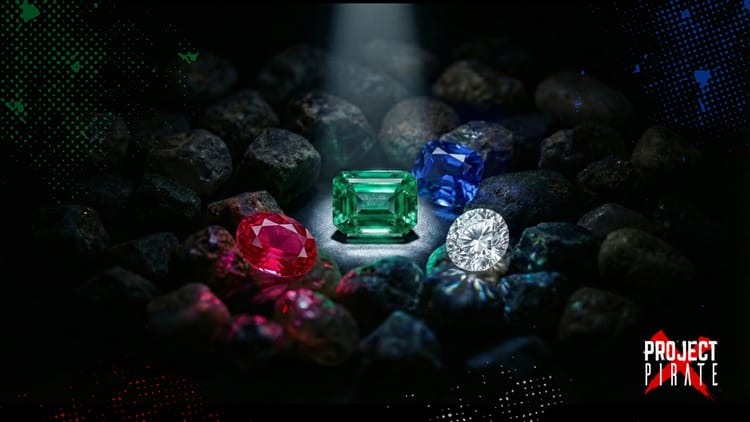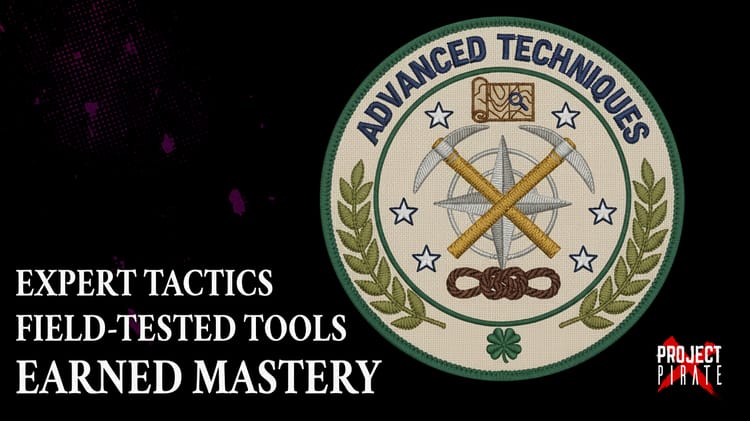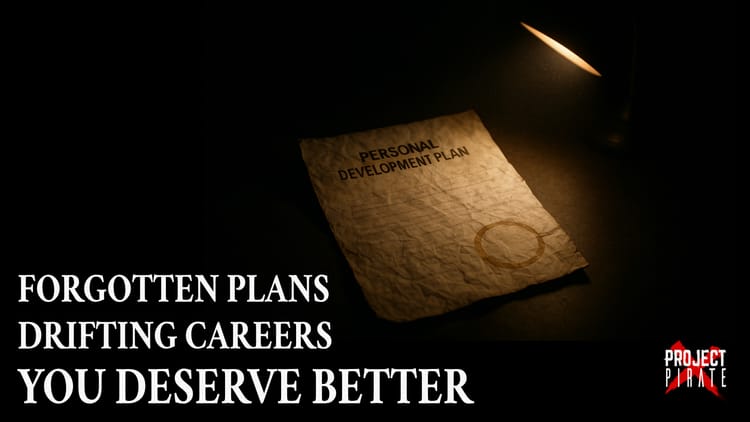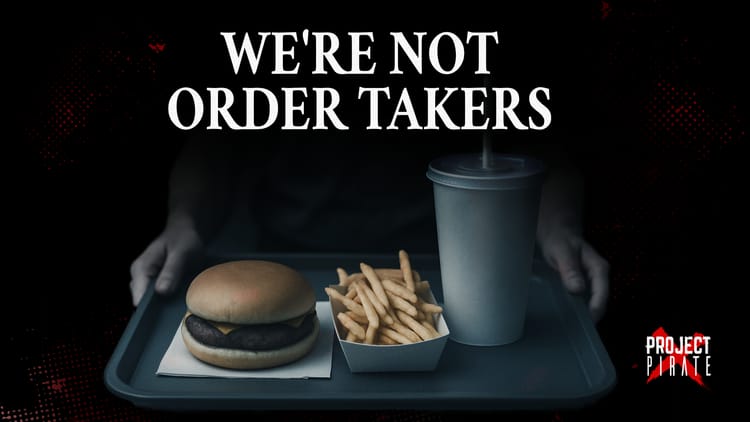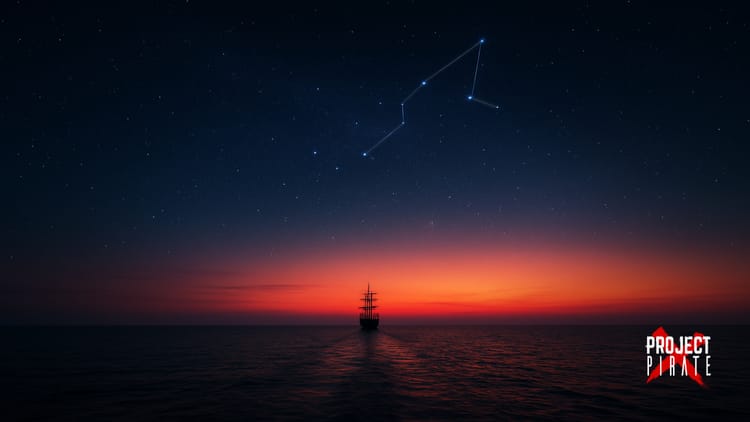The Three Horsemen of Project Apocalypse: Why Value is Your Only Treasure
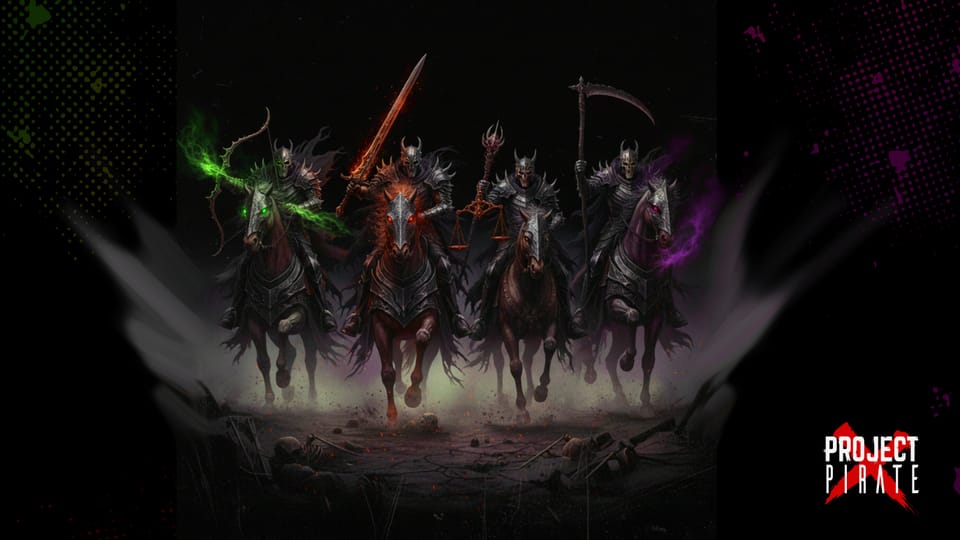
A Project Pirate's Guide to Conquering the Triple Constraints
🌊 The storm gathers. Lightning cracks across the horizon, rain lashes the deck and the Captain grips the wheel with white-knuckled hands. The sound comes first as a low rumble, then as a thunderous roar: the pounding hooves of the Horsemen.
Every Project Manager knows the feeling. You're sailing through calm waters when suddenly the horizon darkens. Three riders emerge from the storm clouds, each carrying the power to destroy your carefully laid plans. Traditional project management calls them the "triple constraints", the "iron triangle" - time, cost, and scope. But seasoned navigators know them by their true names: the Three Horsemen of Project Apocalypse.
And yet, here lies the paradox. The very horsemen who seem determined to end your project can, in truth, be the ones who save it. If you learn to ride with them, not against them, they stop being omens of doom and start becoming unlikely allies.
The ancients spoke of four: Conquest, War, Famine and Death. But in project delivery, one of them never rides alone. Death - or in our language, Quality, is simply the sum of the others. When Time, Cost or Scope trample you, your project dies. That's why in our world, three horsemen are all it takes to bring about an apocalypse.
Scope, Time and Cost are the interdependent riders of every voyage. To keep the ship afloat, they must be balanced - for it is only in that balance that true Quality survives.
Unlike their biblical counterparts, these horsemen don't herald the end of the world. They herald the end of projects that mistake activity for achievement, deliverables for value and completion for success. But here's the secret: the treasure was never about avoiding the horsemen. It's about learning to ride alongside them.
⚓ This is the story of how to face the Horsemen of Project Apocalypse... and why they need not be feared.
Meet Your Apocalyptic Crew
The First Horseman: Time - The Relentless Tide
Time is the horseman who thunders across the deck, driving the Crew with the pounding rhythm of deadlines. He promises urgency, speed and the illusion of progress. “Push harder, sail faster,” he whispers, “and you’ll reach the treasure first.”
At first, the Crew cheers... faster work feels like mastery over the storm. But the tide is merciless. Rushing blinds the eyes, frays the lines and cracks the hull. Quality falters, mistakes compound and every shortcut taken in haste can sink the project long before the destination is reached.
The paradox: push too fast, and you break the ship; hesitate too long, and the storm overtakes you. Time, like a horseman, can destroy you or save you - depending on how you respect his rhythm. The only path forward is to harness urgency, focusing on the activities that truly generate value and letting the rest be swept away by the waves.
Push too fast, and you break the ship; hesitate too long and the storm overtakes you
The Second Horseman: Cost - The False Friend of Frugality
Cost is the horseman who tempts you with frugality. He whispers that trimming here and shaving there will make the voyage leaner, faster, more efficient. At first, the Crew cheers - less spend means less scrutiny.
But beware... cutting corners on cost may calm the storm for a moment; yet too often it tears a hole in the hull that sinks you later. Projects fail not because they overspent, but because they underspent on the things that mattered: resilience, testing, or simply enough hands on deck.
The paradox: spend too freely, and you squander your treasure; spend too little, and you never reach shore. Cost, like a horseman, can trample you either way. The only path forward is to make every coin serve the value you seek to create - not just the appearance of thrift.
Cost is the horseman who tempts you with frugality.
The Third Horseman: Scope - The Siren of Promise
Scope is the most seductive rider. He lures you with visions of grandeur: one more feature, one more capability, one more flourish to impress the admiralty. His promises are intoxicating because they feel like progress.
But every addition has weight. The true test is not how much scope you can carry, but whether each addition strengthens the vessel or simply drags her lower in the water. Complexity is not free - it is ballast. Sometimes it steadies you, more often it pulls you under.
Here lies the paradox: say yes too often, and you drown in your own ambition; say no to everything, and your voyage becomes irrelevant. Scope, like the sea, must be navigated - wide enough to matter, narrow enough to survive.
Complexity is not free - it is ballast. Say yes too often, and you drown in your own ambition!
The Apocalypse Mindset: Why Traditional Constraints Thinking Fails
Traditional project management treats time, cost and scope as constraints to be balanced - three competing forces pulling your project in different directions all under the guise of delivering a high quality outcome. This framework assumes that success means finding the "sweet spot" where all three are satisfied.
This thinking is fundamentally flawed.
The constraint-balancing approach ignores the most critical question: Are we maximising the total value created relative to our investment or resources consumed? Teams obsess over managing inputs (time, cost, scope) while ignoring the fundamental economic reality - every project is an investment that must generate value greater than the resources invested.
The apocalyptic reality is simpler and more brutal: projects don't fail because constraints are poorly managed. They fail because they never established clear value expectations that justify the investment.
When you shift from constraint-balancing to value-maximising, everything changes. The three horsemen aren’t your enemies - they can be your allies.
Value: The Engine That Drives Everything
In our apocalyptic framework, Value isn't the fourth constraint - it's the engine that makes confronting the three horsemen worthwhile. But here's where most frameworks lead you astray: they measure value in terms of deliverables rather than total value creation.
Value Creation = (All Benefits Generated) - (Full Cost of Resources Consumed)
Value encompasses the complete spectrum of benefits your project creates:
- Performance Value: Improved speed, efficiency, capacity or capability.
- Feature Value: New functionality, enhanced user experience, expanded options.
- Form Value: Better design, usability, aesthetics or user satisfaction.
- Function Value: Enhanced reliability, security, compliance or operational excellence.
- Financial Value: Cost reduction, revenue generation or resource optimisation.
Real value creation has three non-negotiable characteristics:
- Quantifiable Impact: Benefits that can be measured and validated, not just promised.
- Attribution Clarity: Value you can reasonably trace to your project activities.
- Stakeholder Recognition: Benefits that stakeholders actually experience and acknowledge.
When teams focus on value-based decisions rather than deliverable completion, every choice becomes an optimisation question: Will this change increase our total value creation or just increase our activity?
Turning Apocalypse into Value Acceleration
Alliance with Time (The Relentless Battle as a Value Multiplier)
When you're focused on value creation rather than just project completion, time pressure becomes a powerful value multiplier. Time forces the crucial question: "If we had half the time, what would we focus on to maximise our value creation?"
This isn't about cutting corners - it's about cutting through to the highest-value activities. Time eliminates everything that consumes resources without proportionally increasing total value delivered.
Time's Value Oath: "I will help you distinguish between activities that generate value and activities that just generate work."
Alliance with Cost (The False Friend as Value Protector)
When you're value-focused, Cost becomes a value protection mechanism. Cost forces you to invest only in activities that multiply value creation, not activities that just feel important.
Resource scarcity prevents the luxury of features that consume resources without adding value. The constraint forces creative solutions that maximise value-to-cost ratios. Cost becomes your navigator when you learn to distinguish between necessary investment and wasteful spending.
Cost's Value Oath: "I will help you find the path that creates the maximum value with minimum resource waste.”
Alliance with Scope (The Siren as Value Optimiser)
When you're measuring total value creation, scope changes become value optimisation opportunities rather than project disruptions. Scope helps evaluate every potential addition: Does this change increase our expected value delivery or just add to our weight in the water?
Scope discipline isn't about saying no to everything - it's about saying yes only to changes that exponentially increase your value-to-cost ratio: which activities deliver the most benefit for our investment?
Scope's Value Oath: "I will help you distinguish between scope expansion that multiplies value and expansion that just multiplies tasks."
How do you know if you're truly riding alongside the horsemen rather than being trampled by them?
The key: When you optimise for value, constraints become optimisation tools. The horsemen themselves force sharper decisions, eliminating everything that doesn’t contribute to your goals.
Commanding the Horsemen
The Time Command (Value Velocity):
- Value Velocity Tracking: What's our value creation rate per week/month of project duration?
- Resource-to-Benefit Acceleration: Which activities create the fastest return on time invested across all value dimensions?
- Critical Value Path: Which sequence of activities maximises total value delivery in minimum time?
The Cost Command (Value Protection):
- Value-to-Cost Analysis: What's our current benefit-to-cost ratio across performance, features, form, function and financial dimensions?
- Resource Efficiency Auditing: Which activities generate the highest value per pound / dollar invested?
- Waste Elimination: Regular purges of activities that consume resources without generating proportional value.
The Scope Command (Value Discipline):
- Feature-to-Value Mapping: Which features multiply value vs. features that dilute focus?
- Scope Change Value Testing: Does this addition increase our expected total value or just our task list (drags the ship lower)?
- Value-Density-per-Feature: Every feature or deliverable should increase velocity of value, not dilute it.
The Captain's Log: Measuring Apocalypse Success
Traditional metrics measure constraint compliance - on time, on budget, to specification. Apocalypse navigation measures value acquisition:
Primary Value Navigation Metrics:
- Value-to-Resource Ratios (total value generated per unit consumed)
- Stakeholder Value Index (measurable improvement across performance, features, form, function and financial dimensions)
- Sustainable Value Trajectory (projected ongoing benefits beyond project completion)
Horseman Alliance Metrics:
- Time: Time-to-Value acceleration rates across all benefit dimensions (Value Velocity)
- Cost: Value-Creation-to-Investment multipliers (Value Multiplier)
- Scope: Value-Density-per-Feature / Deliverable (Value Density)
The Voyage Begins: Your Next Expedition
The three horsemen are already riding towards your next project. You can meet them as victims, cowering behind traditional constraint-balancing frameworks, or you can greet them as allies in your value-creating voyage.
Your choice determines not just project success, but the kind of leader you become.
Will you be the Captain who explains why constraints make success difficult, or the one who transforms constraints into value-finding accelerators?
The horsemen don't wait for perfect conditions. Neither should you. Because the real treasure lies in riding the storm. ⚡️
Set sail. The treasure awaits.
Ready to transform your project apocalypse into a value-creating adventure? The methodology is proven, the framework is ready and your Crew is waiting. The question is: do you have the courage to ride alongside the horsemen?
